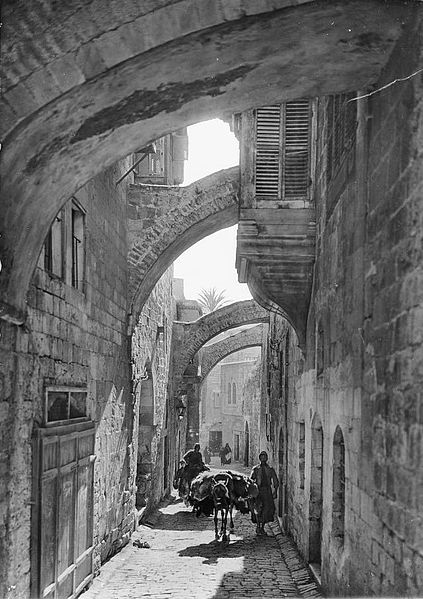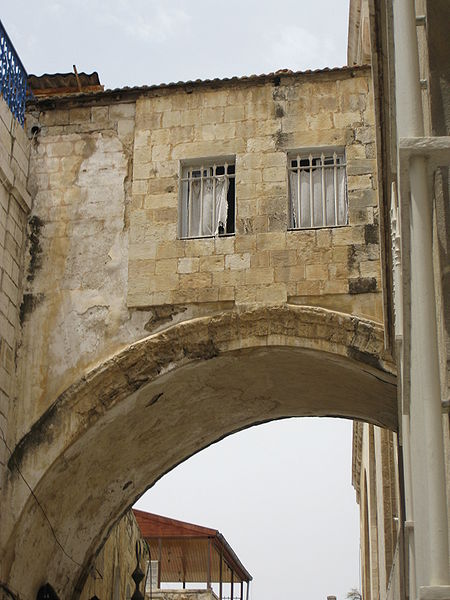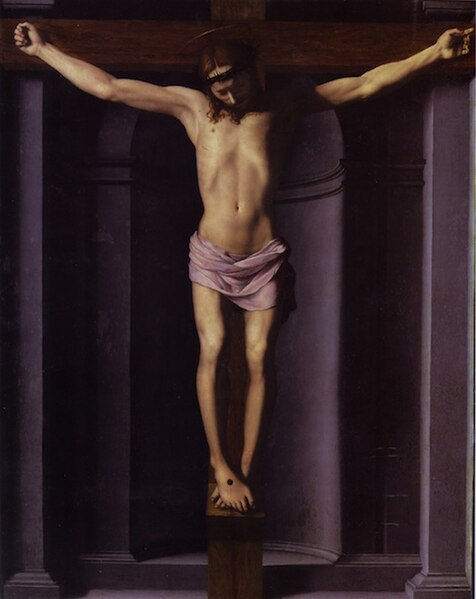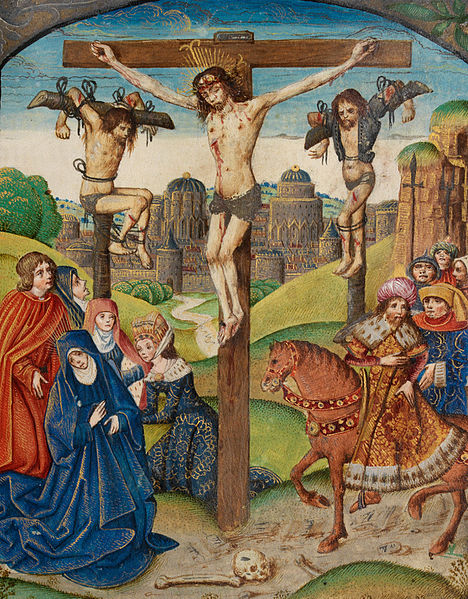The Via Dolorosa is a processional route in the Old City of Jerusalem. It represents the path that Jesus took, forced by the Roman soldiers, on the way to his crucifixion. The winding route from the former Antonia Fortress to the Church of the Holy Sepulchre—a distance of about 600 metres (2,000 ft)—is a celebrated place of Christian pilgrimage. The current route has been established since the 18th century, replacing various earlier versions. It is today marked by 14 Stations of the Cross, nine of which are outside, in the streets, with the remaining five stations being currently inside the Church of the Holy Sepulchre.
Via Dolorosa, Jerusalem
Sign along the Via Dolorosa
Shop on the Via Dolorosa near the Ecce Homo arch, Jerusalem, 1891
The central Ecce homo arch, now partially hidden by subsequent construction
The crucifixion of Jesus was the execution by crucifixion of Jesus of Nazareth in 1st-century Judaea, most likely in AD 30 or AD 33. It is described in the four canonical gospels, referred to in the New Testament epistles, attested to by other ancient sources, and is broadly accepted as one of the events most likely to have occurred during his life. There is no consensus among historians on the details.
Christ Crucified (c. 1632) by Diego Velázquez
A depiction of the Raising of the Cross, by Sebastiano Mazzoni, 17th century, Ca' Rezzonico
Bronzino's depiction of the crucifixion with three nails, no ropes, and a hypopodium standing support, c. 1545
Christ on the Cross between two thieves. Illumination from the Vaux Passional, 16th century








